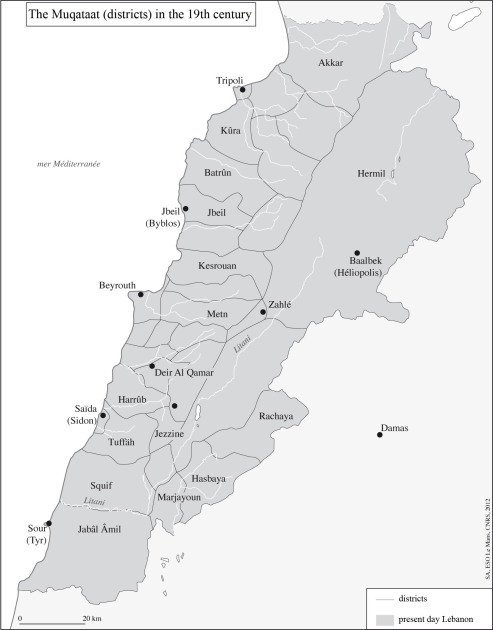Introduction
The emirate[1] of Mount Lebanon amounted to a distinct political entity within the Ottoman Empire. It enjoyed a relative autonomy and more importantly a specific status that distinguished it from many other known Ottoman institutions and the nature of which was essentially fiscal. The Ma'an dynasty was the first to have ruled the emirate from the Ottoman conquest of the Arab provinces in 1516 until it became extinct in 1697. The emirate's population belonged to either its aristocratic families or a peasant farmer class locked in an almost immutable social order. Its area matched more or less the future Lebanon's geographic span and often included some regions of Palestine and Syria. It spread or shrunk in size according to its incumbents' political skills – and the alliances and military successes they were able to pull off. Thus it went with the Ma'ans whose dynasty ended when Emir Ahmad (1664-1697) died leaving no heir or successor. Power then passed to the Shihabs, of the lineage of a Meccan Quraysh[2] family that had settled in Hasbayya in Wadi al-Taym, there to fight the Franks (European incomers).
The transfer of power from Ma'ans to Shihabs observed four principles that established its legitimacy. They were: kinship between the two houses; unfaltering political alliance sealed in allegiance to the same Kayssiyya[3] party; the preference expressed by the overlords; and its recognition by the Sublime Porte. To these strands of legitimacy, the Shihabs added sound leadership qualities and military clout. Their smooth running of Mount Lebanon revolved around their skill in enlisting aristocratic clans, in securing the integrity of their territory, augmenting it with the Beeka plain and the city of Beirut, thereby securing its supply in cereals and opening it on world trade. Their military power was affirmed through their handling of the countless conflicts that lay them open to external and internal dangers ranging from neighbouring walis[4]' attacks, to local lords' encroachments, via rivals' conspiracies. The princes emerged the victors of all the struggles they lead against their opponents in the first third of the 18th century, notably at the battle of Ayn Dara in 1711 when they crushed a Yamaniyya party coalition and consolidated a government model founded in the iqta[5] that survived until 1842. This system was the keystone of the emirate and established the hierarchy of relationships between the aristocratic families and peasant farmers as well as within each class. Nasif Al-Yaziji[6] has dedicated a treatise to the description of its foundations.







